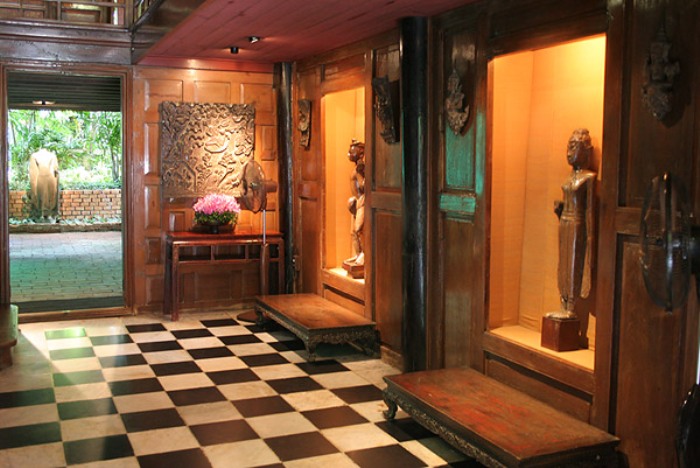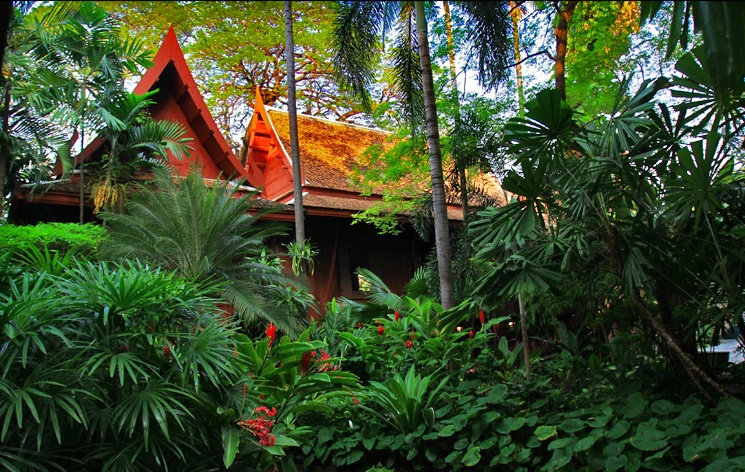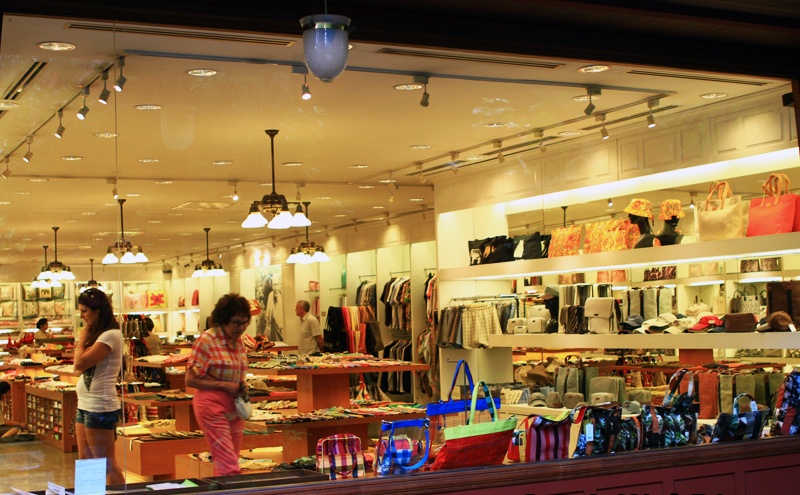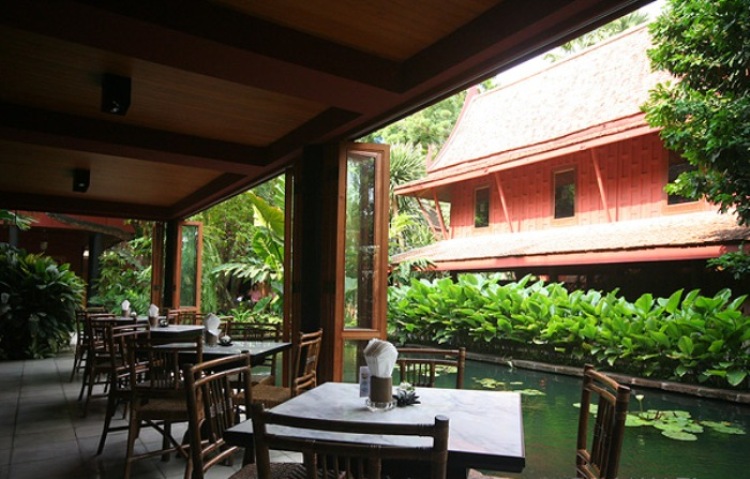Jim Thompson House
The lovely garden-enclosed compound sitting on the bank of the Saen Saeb Canal would have gone completely unnoticed, had it not been for a legacy left behind by a middle-aged American man named Jim Thompson. His elegant residential enclave, comprising six traditional Thai teakwood houses transported from Ayutthaya and Bangkok’s Ban Krua community, echoes Jim Thompson’s 30-year love affair with Southeast Asian art and cultural heritage.
An architect by training and an avid collector of Asian objets d’art, Jim Thompson’s keen eyes and flair for design breathed life into everything he touched. After his discharge from military service in 1946, Jim Thompson decided to settle down in Thailand, where he dedicated over 30 years to reviving Thai silk – then a dying cottage industry – and introduced it to the world’s most respectable fashion houses and catwalks in Paris, New York, London and Milan.
The same goes for his Thai house, which was no ordinary teakwood villa complex filled with incongruous collections of antiques, but a breathing museum – even then – that embodies Jim Thompson’s life-long passion and whimsical design choices. One day in 1967, while at the height of his success, he mysteriously disappeared into the Malaysian jungle, and thus began the legacy of Jim Thompson…
tastefully decked entry foyer, itself an unconventional architectural feature in traditional Thai houses and a preamble to Jim Thompson’s signature East-meets-West style permeating throughout the house.
A clever lighting arrangement draws your eyes to two wall niches displaying a 17th Century standing Buddha and a wooden hand-carved figurine. High above your head, a Belgian chandelier glistens from the ceiling, while the floor is laid out with Italian marble tiles, punctuating the heavy wood accents on the walls and indoors staircase.

Upstairs, you are greeted by a series of decorative wall hangings that Jim Thompson acquired from various Buddhist temples. Like ancient murals, they tell stories of the Buddha’s previous and present lives as well as his spiritual journey towards attaining enlightenment. From here, proceed to the right and encounter the solemn sandstone Buddha image guarding the entry to the Thai kitchen, which now houses Jim Thompson’s exquisite collection of Benjarong porcelain ware.
The dining room is housed inside the 19th Century teakwood villa Thompson bought from its owner in Ayutthaya. On the dining table, fashioned from two Chinese mahjong tables, the blue-and-white porcelain set is laid out in its full glory, as if dinner is about to be served, with Thompson seated at the head of the table, his back to the windows.

Set between the private quarter and the dining area is the living room, constructed from the 100-year-old wooden house Jim Thompson bought from the Ban Krua Muslim community just across the canal. The villagers at Ban Krua were the first weavers of the Jim Thompson silk brand. Jim Thompson used to row across the canal and back every day, until he decided to build a permanent home here.
With a four-metre-high ceiling and one open-sided wall, the living room is a lofty area overlooking the Saen Saeb Canal. Thompson masterfully converted the four windows into four display niches, upon which he placed four Burmese guardian spirits (or ‘Nats’) carved from wood, a gift from the Burmese government.

As you wander from one room to the next, you can’t help but admire Jim Thompson’s thoughtful eclecticism and meticulous attention to details. His sophisticated taste and in-depth knowledge of Southeast Asian art shine through the rare antique and art collections placed tastefully in each room that enrich the overall ambience, rather than just show off his wealth.
While respecting local traditions and customs, he was no slave to them either. The staircase and bathrooms are found indoors, rather than outdoors as you would normally find in traditional Thai homes. Satellite houses, which normally would be linked through an open courtyard area, are all grouped under one roof with a covered walkway. And the decorative window panels, which traditionally face outwards, face in. Jim Thompson’s skillful adaptation of the local style to suit his western upbringing was years ahead of its time, rendering a timeless twist to what would otherwise be labeled as ‘classic’ or simply ‘colonial’.

After Jim Thompson’s mysterious disappearance, a court-appointed administrator, which 10 years later became The James H.W. Thompson Foundation, took over the management of his house and assets. Today, the brand Jim Thompson also extends to an art centre, souvenir boutique, restaurant and café, as well as banqueting facilities located in the same vicinity. With an outdoor terrace by the canal, the elegantly appointed Araya Hall caters for gatherings of between 40 and 80 people, whether a corporate function, meeting, fashion show, wedding banquet, press conference, private luncheons or dinners.



































